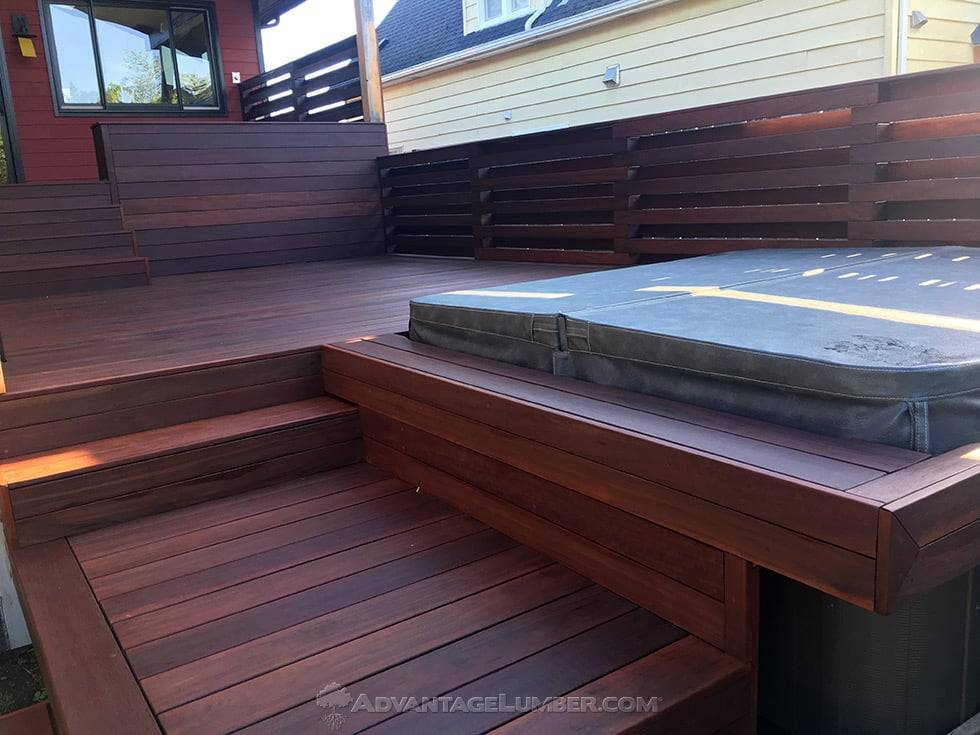Selecting the right type of wood for outdoor projects is essential, especially when considering the durability and longevity required to withstand varying weather conditions.
In this blog post, we will explore ten of the most weather-resistant woods, detailing their benefits, expected lifespan outdoors, and Janka hardness scores, which measure the resistance of wood to wear and denting.
1. Ipe (Brazilian Walnut)
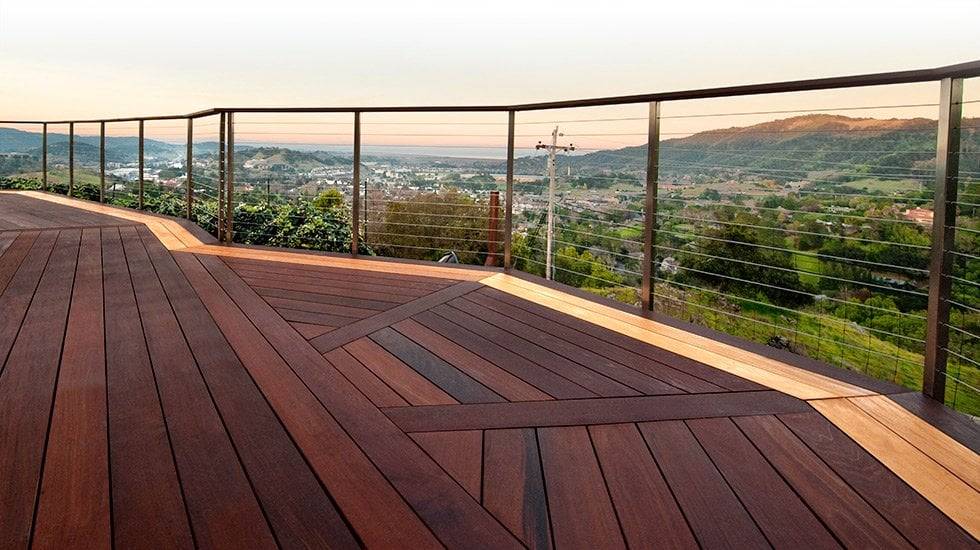
Ipe, often referred to as Brazilian Walnut, is renowned for its incredible toughness and durability. It is extremely dense, which makes it resistant to rot, decay, and insect infestation. Ipe’s tight grain and natural oils prevent moisture absorption, making it an excellent choice for wet and humid climates. Ipe is hands down the best weather resistant wood we’ve come across and it’s one of our top sellers.
- Benefits: Ipe is extremely durable and resistant to rot, insects, and weathering. It’s ideal for decking and outdoor flooring.
- Lifespan: Ipe has proven to last up to 70 years outdoors on commercial applications such as the Coney Island boardwalk.
- Janka Hardness: 3,680 lb
2. Teak
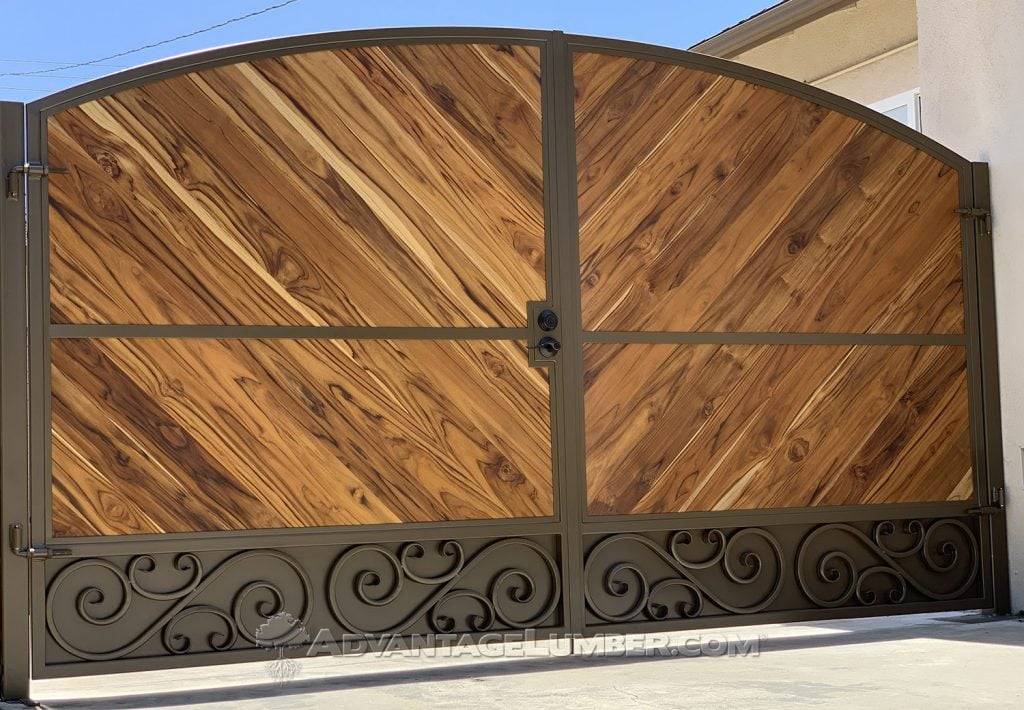
Teak is a top choice for outdoor furniture due to its high oil content and tight grain structure. These characteristics provide natural water resistance and prevent warping, cracking, or swelling. Teak weathers to a beautiful silver-gray if left untreated, enhancing its appearance while maintaining its structural integrity.
- Benefits: Teak contains natural oils that repel water, making it perfect for outdoor furniture and boat decks. It’s much lighter in weight than Ipe so if weight is a concern this can be an added benefit.
- Lifespan: Properly maintained teak furniture can last 50 years or more.
- Janka Hardness: 1,070 lb
3. Mahogany (Red Balau)
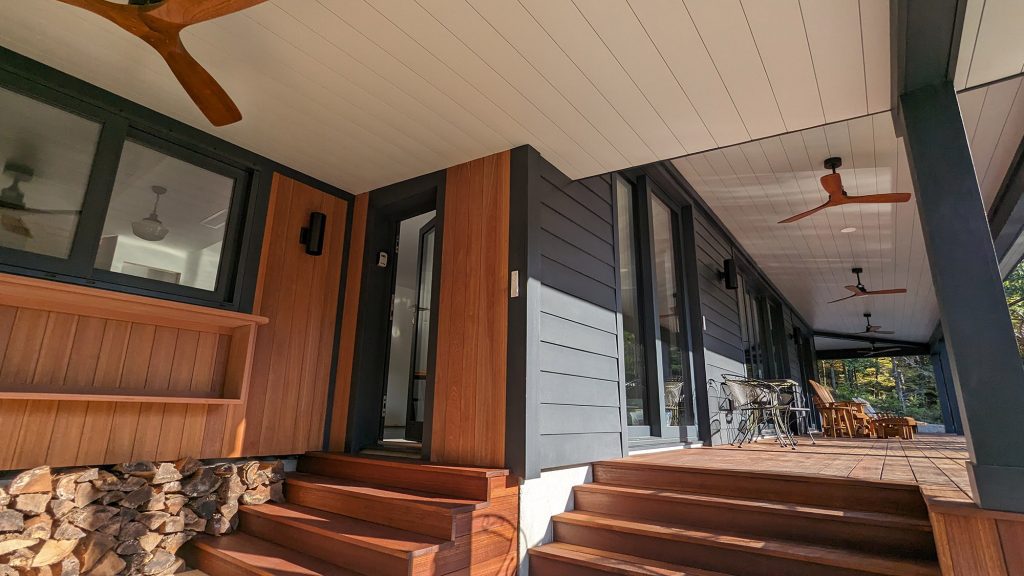
Known for its beauty and durability, mahogany is a popular choice for outdoor projects. It has a natural resistance to rot, moisture, and insect damage. Mahogany’s rich color and smooth texture make it not only practical but also visually appealing for outdoor spaces.
- Benefits: Mahogany is prized for its beauty and durability, resisting rot and moisture well.
- Lifespan: Mahogany can last 30+ years outdoors.
- Janka Hardness: 1600 lb
4. Golden Mahogany

Golden Mahogany offers similar benefits to regular mahogany but features a lighter, golden-brown color. This wood is durable and resistant to swelling, warping, and rotting, making it suitable for areas that experience frequent rain or high humidity.
- Benefits: Offers the same resistance as traditional mahogany but with a distinctive golden color.
- Lifespan: Similar to mahogany, around 30+ years.
- Janka Hardness: 1,798 lb
5. Tigerwood
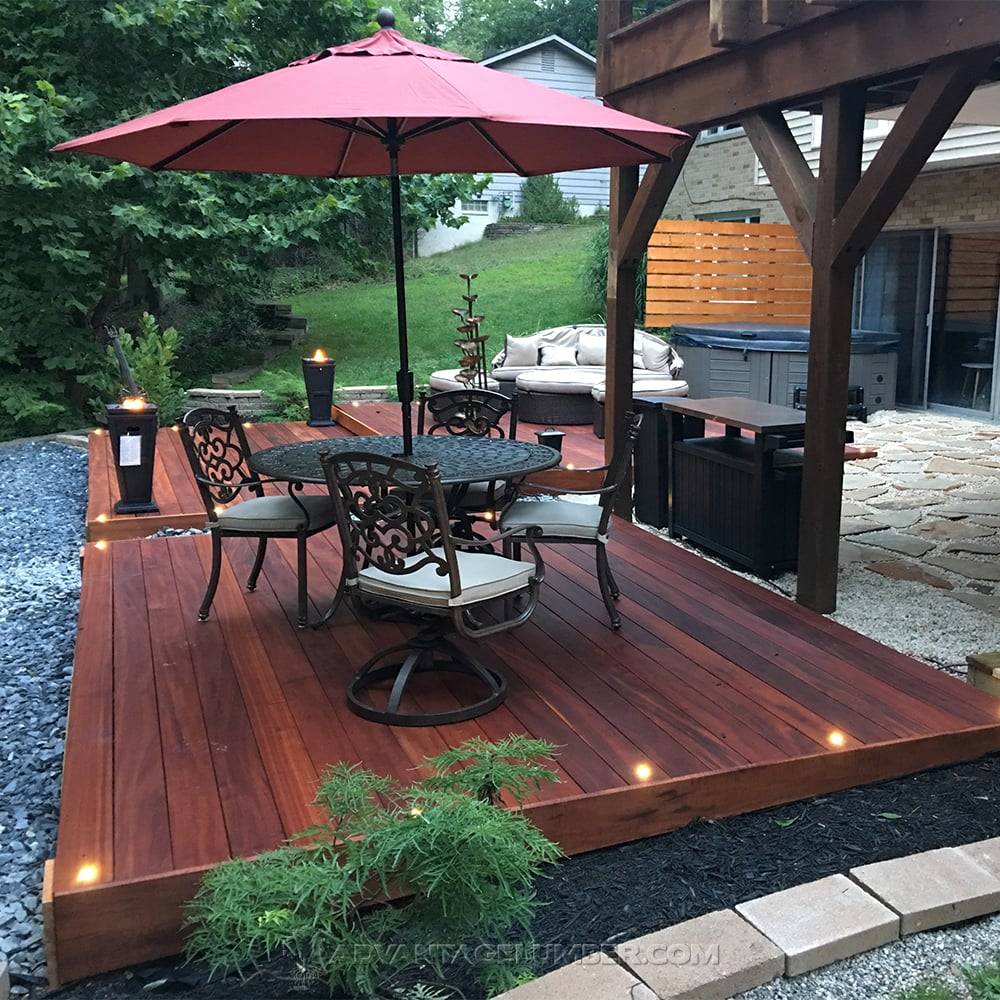
Tigerwood is distinguished by its dramatic color variations and bold striping. It is highly resistant to rot and moisture due to its dense grain and natural oils. Its unique appearance and robust properties make it a favorite for striking outdoor decks and furniture.
- Benefits: This wood is highly durable and resistant to rot, featuring a striking appearance with bold grain patterns.
- Lifespan: Tigerwood can last 30+ years outdoors.
- Janka Hardness: 2,160 lb
6. Cumaru (Brazilian Teak)
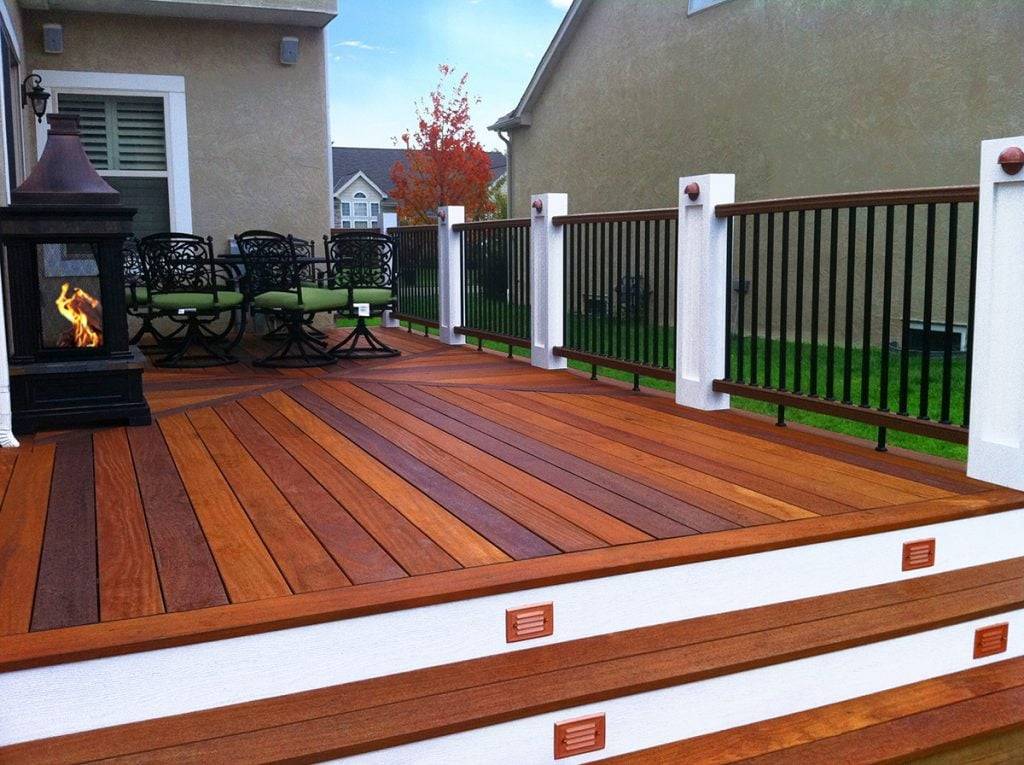
Also known as Brazilian Teak, Cumaru is another highly durable wood choice. It’s almost as hard as Ipe and offers excellent resistance to rot, decay, and insect damage. Cumaru has a beautiful reddish-brown color that weathers well and maintains its integrity even in harsh outdoor environments.
- Benefits: Known for its incredible hardness and durability, Cumaru is resistant to rot and insect attack.
- Lifespan: Cumaru decking can last up to 50 years.
- Janka Hardness: 3,540 lb
7. Brazilian Redwood (Massaranduba)
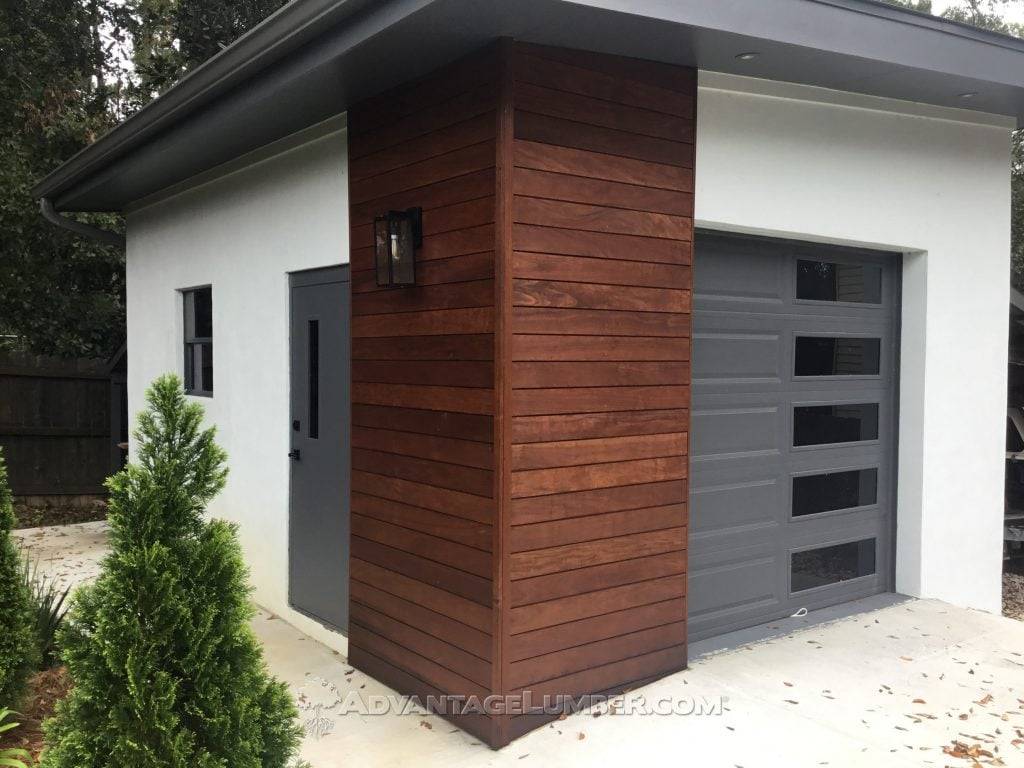
Brazilian Redwood, or Massaranduba, is known for its hardness and durability. It is exceptionally resistant to rot, insect infestation, and weather-related wear. This wood has a beautiful, rich red color that deepens over time, making it both a durable and attractive option for outdoor use.
- Benefits: Offers superb durability and a beautiful rich color, resistant to rot and decay.
- Lifespan: Can last more than 40 years outdoors.
- Janka Hardness: 3,190 lb
8. Garapa
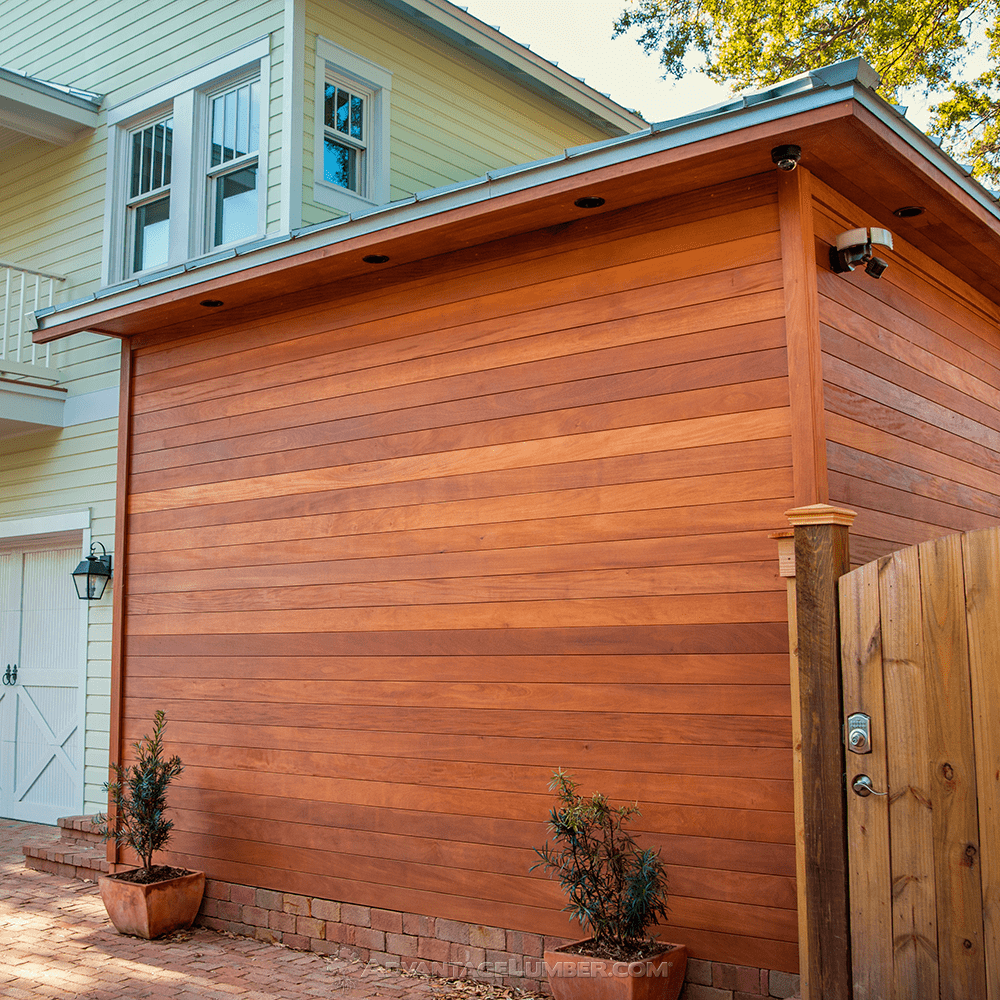
Garapa, another resilient wood from Brazil, is lighter in color but equally resistant to rot and decay. It’s a fantastic choice for homeowners looking for a durable, yet somewhat lighter-colored wood. Garapa weathers to a lovely silver-gray if untreated, similar to teak.
- Benefits: Garapa is naturally resistant to rot, decay, and insect infestation, with a lighter color that weathers gracefully.
- Lifespan: Expect Garapa to last around 30 years outdoors.
- Janka Hardness: 1,650 lb
9. Thermally Modified Wood
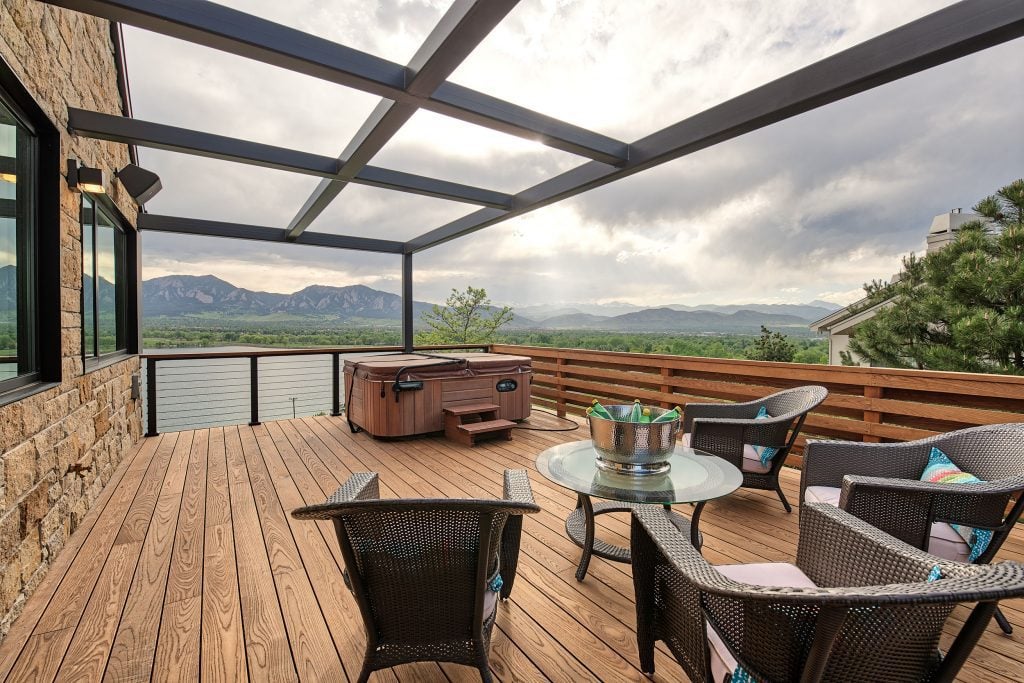
Thermally modified wood has been treated with heat and steam to enhance its durability and stability. This process reduces the wood’s moisture absorption significantly, making it highly resistant to rot and decay. It’s an excellent choice for any climate, particularly in areas with extreme weather conditions.
- Benefits: This wood has been treated to increase durability and stability, making it highly resistant to moisture and decay.
- Lifespan: Thermally modified wood can last 25 years or more, depending on the treatment process.
- Janka Hardness: Varies with the type of wood used; generally, the treatment increases hardness slightly.
10. Brazilian Apitong
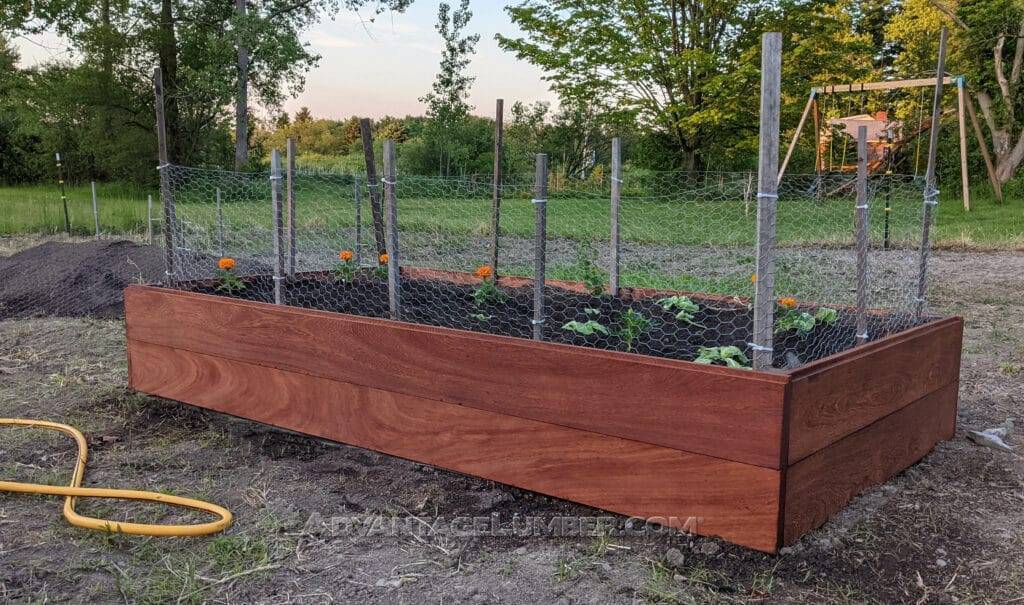
Brazilian Apitong is extremely tough and resistant to wear, making it ideal for heavy-duty applications like truck beds and industrial flooring. For outdoor furniture, it offers unparalleled durability and can handle the rigors of both wet and dry conditions.
- Benefits: Extremely tough and durable, often used in truck beds and heavy-duty applications; it’s also excellent for high-traffic outdoor areas.
- Lifespan: Brazilian Apitong can last 20 to 30 years in outdoor settings.
- Janka Hardness: 3,160 lb
Conclusion
The longevity and durability of these woods make them excellent choices for outdoor projects. From the dense and almost indestructible Ipe to the visually appealing and resilient Teak, each wood species offers unique characteristics that can meet various functional and aesthetic requirements. By selecting the right wood, you ensure that your outdoor spaces are both beautiful and durable, capable of withstanding the elements for years to come.
